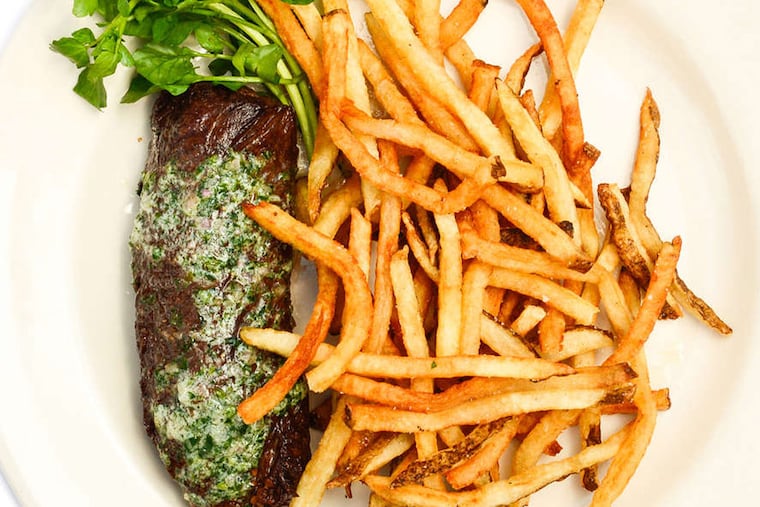Let's phase out the phrase 'ethnic food'
'Ethnic food." Lately, the very term makes me lose my appetite. I encounter it where I don't expect it - in mainstream food writing - and where I do expect it: Yelp. Browsing that vast compost pile of opinion, I learn that one restaurant has "just enough ethnicity to make people feel multicultural." Another,

'Ethnic food." Lately, the very term makes me lose my appetite.
I encounter it where I don't expect it - in mainstream food writing - and where I do expect it: Yelp. Browsing that vast compost pile of opinion, I learn that one restaurant has "just enough ethnicity to make people feel multicultural." Another, a Latin American joint that sits on a gentrification line of demarcation, can still pass one reviewer's ethnic test. Which is, of course: "Look for patrons of that restaurant's ethnicity eating there."
Then there are gems such as this floating out there on the Internet: "When it comes to a restaurant run by immigrants, look around at the street scene. Do you see something ugly?" That is your cue, suggests the writer: Authenticity awaits. And apparently it is intertwined with low-rent digs and health-code violations.
Blech.
For Americans, eating out has always been discount tourism, charred fish with the head on being the food obsessive's equivalent of a visit to Angkor Wat (no malaria pills necessary!). Our desire to explore via our taste buds is as innate as the itch to traipse through the souks of Morocco and snorkel in the blue waters of Bora Bora.
By all means, eat up. Wrap your fingers around a sticky Laotian sakoo yat sai, savor your first taco with corn smut. But it's time to stop talking about ethnic food as though we're Columbus and the cuisines served up by immigrants are ours for the conquering. Let us never again blog a lengthy ethnography, no matter how well intentioned, when we visit a pupuseria. In fact, let's drop the term "ethnic food" altogether.
It's not the phrase itself, really. It's the way it's applied: selectively, to cuisines that seem the most foreign, often cooked by people with the brownest skin.
"Ethnic food" is always Indian and Thai, Vietnamese and Salvadoran, strip-mall and gas-station eateries and fare so spicy it should be washed down with equal parts water and Pepto-Bismol. Those who seek it out are dubbed "adventurous" eaters, as though only Indiana Jones could get down with a plate of tibs.
Why do a couple of innocuous words have me so ready to slap someone with a roll of injera? Why do I care?
Immigrants' identities are deeply tied to the foods we bring with us. When we hear our cuisine described as exotic, hodgepodge, greasy, or cheap, you might as well be remarking disdainfully about our clothes or skin color.
I am tired of restaurant recommendation requests that do not include Indian or Ethiopian. I'm slack-jawed when I read (Yelp, again) that the offerings at family-owned Mexican restaurants don't measure up to Chipotle's.
"Ethnic cuisines are considered low, and fusion cuisines are considered haute cuisines," says Johanna Mendelson Forman, who teaches about the relationship between food and international conflict at American University's School of International Service.
Krishnendu Ray, a New York University professor of food studies, says we use the descriptor ethnic for "a category of things we don't know much about, don't understand much about, and yet find it valid to express opinions about." Ray, who has written reams about ethnic cuisine, including a forthcoming book, The Ethnic Restaurateur, says the term ethnic food is used as a way to signify "a certain kind of inferiority." He even has a $30 theory: Diners, he says, refuse to pay more than $30 for what they perceive as ethnic food.
Yet Neapolitan pizza, steak frites, tapas, and trendy, leaf-strewn Nordic cod evade the label, even though residents of European countries are every bit as connected by ethnicity as people elsewhere, and even though the ingredients are often just as foreign. We simply give Western European cuisine a pass.
Here's a funny truth about dining in America: We didn't really eat out until we had our first taste of immigrant cuisine. After that, restaurants became a national obsession.
It's an ideal moment to lay down our forks and rethink how we perceive our immigrant cuisines. Our exposure to a world of foods has never been greater; our palates have never been more primed.
It's no longer a foreign concept to lunch at a banh mi carryout and then settle in for a dinner of Filipino sisig and end the night at a gelato shop, splitting an affogato. And that's true whether we're in Los Angeles, Minneapolis, or Washington.
Our American taste buds are also being profoundly influenced by a slew of second-generation Americans, including Los Angeles' Roy Choi and New York's David Chang and Jessi Singh, each of whom is serving global food without getting slapped with the ethnic label. In Washington, restaurants such as Filipino-flavored Purple Patch, Ethiopian restaurant Ethiopic, hip Cambodian-meets-Taiwanese outfit Maketto, Laotian Thip Khao, and Peruvian Ocopa similarly defy the stereotypes foisted upon immigrant eateries. Their chefs are cooking the dishes of their heritage in handsome spaces with exposed brick and Edison bulbs; people of all ethnicities can be found dining within.
Do some question the authenticity of such restaurants, arguing they're not "ethnic" enough? That they charge too much? Absolutely - and that needs to change, too.